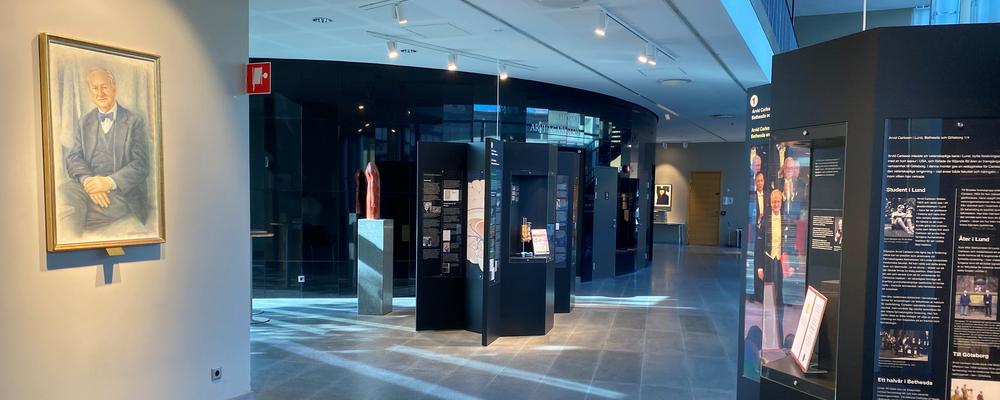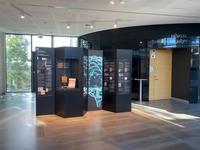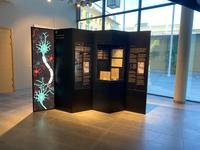
Welcome to the exhibition about Arvid Carlsson
On the Medicinareberget campus in the Academicum main building, there is now a permanent exhibition about our Nobel laureate Arvid Carlsson and his research.
Arvid Carlsson (1923–2018) was a Professor of Pharmacology, University of Gothenburg. He received the Nobel Prize in Physiology or Medicine in 2000 together with Paul Greengard and Eric Kandel for discoveries concerning "signal transduction in the nervous system".
The exhibition presents Arvid Carlsson's professional life and scientific environment, his most important discoveries, and the patient benefits these have led to. In addition, some of the brain's neurotransmitters are introduced with a focus on those that Arvid Carlsson was most interested in.
The Nobel Prize in Physiology or Medicine 2000 (nobelprize.org)
Lund, Bethesda and Gothenburg
Arvid Carlsson began his scientific career in Lund, changed his field of research in connection with a short sojourn to the United States, and spent the next 60 years as a highly successful researcher in Gothenburg. The first showcase presents Carlsson's career and his scientific surroundings with respect to the faculty and the local pharmaceutical industry.
The most important discoveries
Arvid Carlsson had the privilege of not only making one major scientific discovery – the one that earned him the Nobel Prize – but several. He also had the gratification of seeing his efforts markedly improving the lives of patients with serious neurological or mental disorders.
Brain neurotransmitters
This showcase discusses the most important neurotransmitters, particularly with respect to their role in the clinical effects of different drugs. The focus is on the transmitters that Arvid Carlsson was primarily interested in the monoamines. While the monoaminergic neurons are few in number – they constitute only approximately a thousandth of the brain’s neurons – they play an important role in regulating motor function, cognition, emotions, and behaviour, and they are the primary target of many of the pharmaceuticals used in neurology and psychiatry.
Exhibition about Per-Ingvar Brånemark
In the building Academicum, there is also the exhibition about Per-Ingvar Brånemark, the father of the titanium screw, who discovered that bone can grow together with titanium – a phenomenon he called osseointegration.


